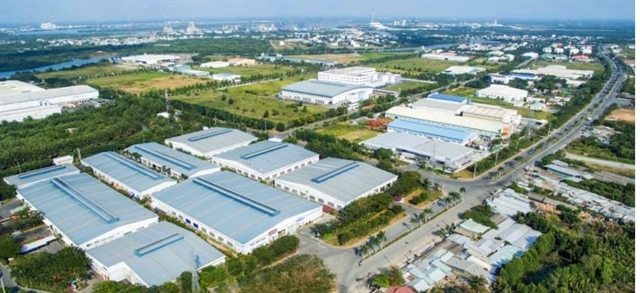 Economy
Economy


|
| Việt Nam remains an attractive destination for investors. — Photo Internet |
HCM CITY — With Covid-19 and trade tensions driving the shift of production lines from China to Southeast Asia, Việt Nam, in particular, seems to have emerged as an attractive destination for investors and manufacturers alike, experts have predicted.
“Việt Nam remains a promising market with a growing trend of manufacturing companies looking to set up operations in the country, which has been happening for a number of years. Industrial park developers remain confident that demand for industrial land will continue to grow and therefore land prices are expected to increase in-line with the long-term potential of Vietnam’s industrial segment,” said Stephen Wyatt, country head for JLL Vietnam.
According to JLL, multinational manufacturers have been setting up operations in Việt Nam for a number of years and this movement has accelerated over the past 12-24 months with companies looking to diversify their operations and supply chains due to tariffs on goods exported from China to the US. More companies are expected to follow suit as the cost of production rises.
Data from the US Census Bureau show a 35.6 per cent surge in goods imports from Việt Nam last year, compared with a 16.2 per cent contraction in goods imported from China.
“Data for this year will be distorted by the effects of the coronavirus on global supply chains, but the trend of manufacturing moving from China to South East Asia will continue,” predicted Stuart Ross, head of industrial for South East Asia at JLL.
According to JLL’s latest market report, companies looking to diversify their manufacturing portfolio outside China are attracted to Vietnam thanks to its proximity to China, Free Trade Agreements (FTAs) and the Government’s ambition to establish Vietnam as a manufacturing hub for Southeast Asia.
The average land price in the Northern areas reached US$99 per sq.m, up 6.5 per cent year-on-year in the first quarter of this year, while the Southern areas recorded $101 per sq.m, up 12.2 per cent year-on-year in the last quarter last year. Ready-built factories recorded an average price of $3.5 - 5.0 per sq.m per month for both areas.
“In light of the current Covid-19 situation, the postponement of ongoing leasing negotiations and new requirements will become more apparent if the situation does not improve soon. However, JLL believes that the market is likely to recover and grow rapidly after the epidemic is well under control. The disruption in the global supply chain caused by the virus outbreak is urging businesses to diversify their manufacturing portfolios geographically, instead of being overly reliant on one market,” JLL said.
The company, however, said that not all manufacturing can be easily outsourced to Việt Nam.
“Manufacturing wages in China are now more than three times those in Viet Nam, but skilled labour in China is also higher. The sheer scale of China cannot be replicated: there are more migrant industrial workers in China than people in Việt Nam. Furthermore, a large percentage of China’s manufacturing is to serve the domestic market," Wyatt added.
China is committed to growing high-value industries. As a leading manufacturer of solar panels, 5G networks, artificial intelligence and batteries, these industries are generally more favoured by local authorities. Lower-value manufacturing chains are often seen as adding to environmental pollution. As China moves towards becoming more eco-friendly, a cleaner, less space-intensive manufacturing sector will also free up land for rezoning to convert to residential spaces.
According to JLL, many businesses are likely to rethink their supply chains in the long term to ensure continuity of their operations and to mitigate risks of future shocks. Coupled with initiatives to improve the sustainability performance and limit the environmental impact of wider operations, retailers may opt to produce and house more stock locally. — VNS